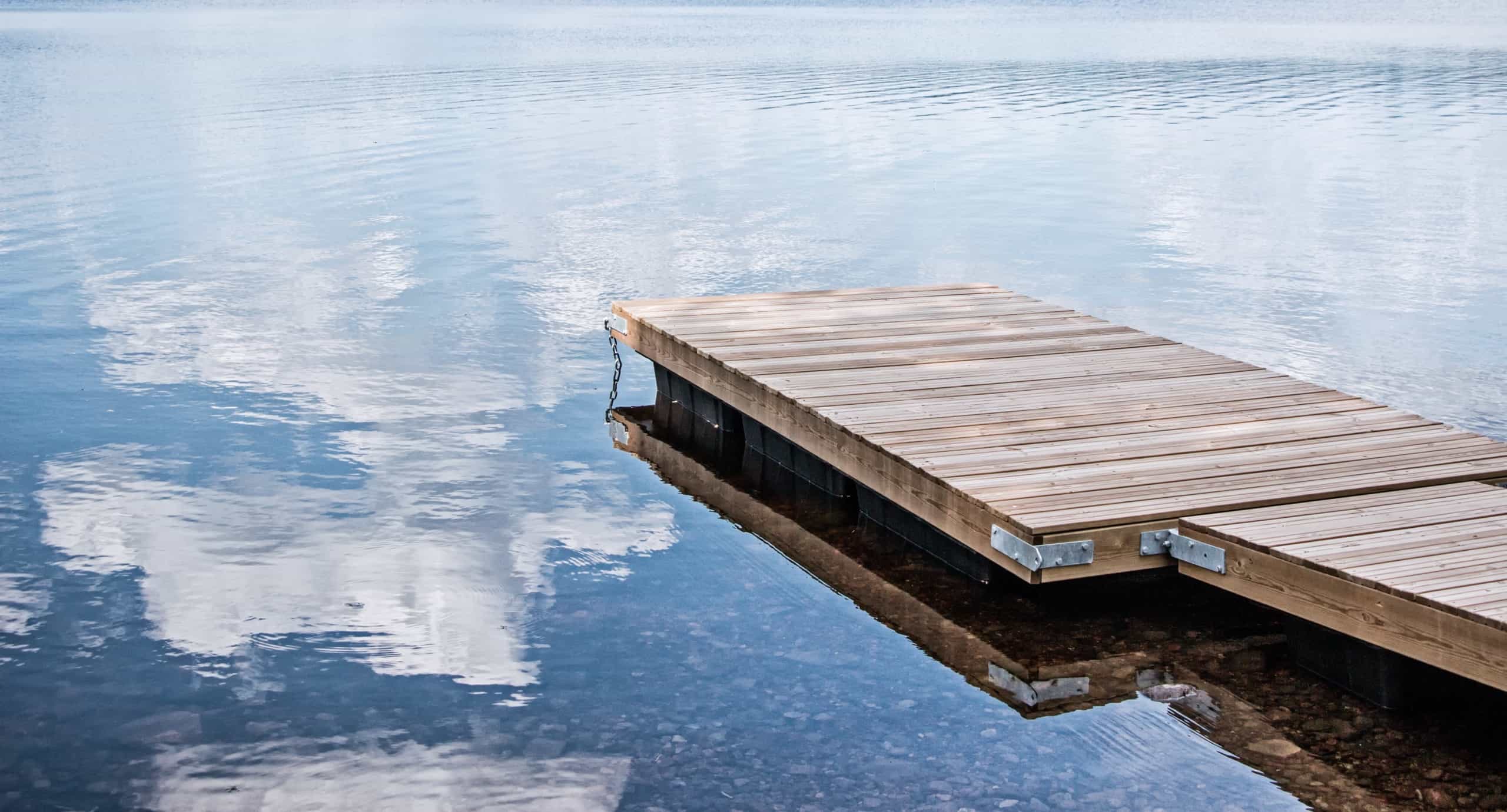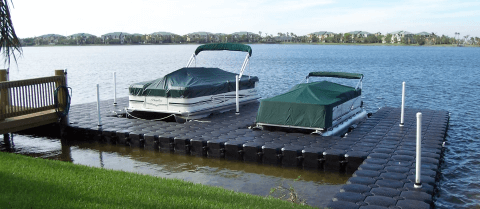Locate the Perfect Floating Dock Builder to Bring Your Beachfront Vision to Life
Locate the Perfect Floating Dock Builder to Bring Your Beachfront Vision to Life
Blog Article
Develop the Perfect Docking Remedy With Floating Docks
Floating docks present a versatile service for a range of maritime demands, adjusting flawlessly to fluctuating water degrees and diverse vessel types. Their modular nature enables fast installation and relocation, yet the selection of appropriate materials and style functions is important for making certain both capability and visual charm. As we check out the vital elements that contribute to the effectiveness of floating docks, several key variables regarding stability and maintenance will arise, raising questions concerning how to optimize your docking experience. The subsequent conversation will certainly illuminate these important considerations.

Benefits of Floating Docks
Floating docks deal many benefits that make them an optimal selection for various maritime applications. Unlike taken care of docks, floating docks increase and fall with the tide, making certain constant accessibility for vessels.
Furthermore, floating docks are normally much easier and quicker to set up contrasted to traditional fixed frameworks. Their modular style enables for straightforward assembly and disassembly, promoting maintenance and moving when needed. This versatility is especially helpful for momentary applications or in atmospheres where conditions might change.
Floating docks likewise often tend to be extra eco-friendly, as they lessen disruption to the seabed and bordering marine ecological communities. Their resilient nature minimizes the risk of damage to aquatic life, promoting a healthier setting. These docks can be tailored to accommodate numerous vessel dimensions, guaranteeing that they fulfill certain operational requirements.
Ultimately, the combination of versatility, ease of installation, and environmental factors to consider makes floating docks an extremely efficient option for a large range of maritime demands.
Picking the Right Materials
Picking the appropriate materials for floating docks is crucial to make certain longevity, stability, and resilience. The selection of materials straight influences the dock's performance in different environmental conditions, consisting of direct exposure to water, sunlight, and potential wear from aquatic traffic.
Typical materials used for floating docks include light weight aluminum, timber, and high-density polyethylene (HDPE) Light weight aluminum is light-weight, corrosion-resistant, and calls for marginal maintenance, making it an exceptional choice for long life. Its initial expense can be greater contrasted to various other materials.
Wood, while aesthetically appealing and offering a traditional appearance, can be at risk to rot and insect damages otherwise appropriately dealt with. For that reason, making use of pressure-treated timber or normally sturdy varieties like cedar or redwood can reduce these concerns.
HDPE is a popular choice as a result of its resistance to UV rays and chemicals, together with being eco-friendly. dock company. It is lightweight and readily available in numerous colors, permitting modification
Ultimately, the right product choice will certainly rely on details demands, consisting of budget, wanted appearances, and environmental factors to consider. Mindful assessment of these factors will certainly lead to a successful and resistant floating dock option.
Design Factors To Consider for Security
When making floating docks, making certain security is a fundamental aspect that can dramatically impact their performance and safety and security. Security in floating dock style is influenced by different aspects, including buoyancy, weight circulation, and the setup of parts.
Weight distribution is essential; evenly dispersing lots throughout the dock stops tilting and enhances security. Broader layouts can provide raised stability, especially in harsh water conditions, while longer docks might need additional supports to prevent sagging.
One more key consideration is the ecological effect, including wave action and wind. Integrating features such as sidewalls or skirting can aid alleviate the effects of environmental forces, maintaining security in negative problems. Eventually, a combination of thoughtful layout, product option, and understanding of ecological variables will certainly produce a floating dock that meets both stability and safety and security needs.
Installment Tips and Methods

Next, protect the needed authorizations and stick to local regulations, which might determine installment methods and environmental considerations. Involve a certified specialist experienced in floating dock installments check out this site if needed. Use high-grade products created for marine atmospheres to enhance sturdiness and long life.
When placing the dock, align it identical to the shoreline to assist in easy accessibility. Guarantee that the anchoring system is robust, using cinder block or helical anchors to support the dock against wind and wave action. It's crucial to represent seasonal water degree changes, including potential ice movement in chillier environments.
During the installment, double-check the dock's floatation and security before finalizing the anchoring. Routinely inspect the installation for any indications of wear or damage. By adhering to these methods and suggestions, you can attain a safe, practical, and cosmetically pleasing floating dock installation that satisfies your requirements.
Maintenance and Treatment Guidelines
Caring and maintaining for floating docks is essential to prolonging their life-span and making sure secure usage. Normal assessments should be carried out to identify any kind of indications of wear, damages, or aquatic development. Try to find splits, loose installations, or stained areas on the dock's surface, as these issues can jeopardize structural integrity.
Cleaning is crucial. Use a investigate this site pressure washer to remove algae, barnacles, and particles, which can accumulate over time. For stubborn growth, take into consideration eco-friendly cleaner that will not harm marine life.
Furthermore, inspect the mooring lines and supports often to guarantee they are free and protected from rust. Change any kind of frayed or damaged lines immediately to keep security.
Throughout severe weather condition, such as storms or freezing problems, take precautionary procedures. Protect the dock with added mooring lines and, if possible, eliminate any type of detachable parts to stop damage.
Verdict
Finally, the implementation of floating docks offers a versatile and effective docking solution suitable for numerous maritime applications. Their adaptability to changing water degrees, integrated with a modular style, allows for very easy customization and moving. Choosing appropriate products improves both longevity and aesthetic appeal, while cautious factor to consider of stability guarantees safety and security and durability. With correct installation and routine upkeep, floating docks can give trustworthy and reliable docking experiences for a large range of vessels.
As we discover the crucial components that contribute to the performance of floating docks, a number of crucial elements relating to security and maintenance will arise, elevating concerns concerning how to enhance your docking experience. Unlike taken care of docks, floating docks increase and fall with the trend, making sure constant access for vessels.When creating floating docks, making certain stability is an essential facet that can significantly affect their capability and safety. Stability in floating dock design is influenced by various aspects, consisting of buoyancy, weight click site circulation, and the setup of elements. Eventually, a mix of thoughtful style, product choice, and understanding of ecological factors will produce a floating dock that meets both stability and safety and security needs.
Report this page